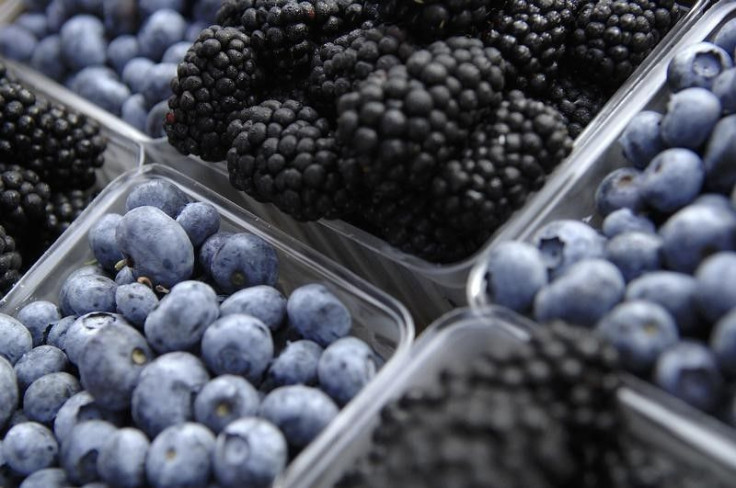Blueberries May Help Control Blood Pressure

Eating blueberries every day might improve borderline high blood pressure in middle-aged women, according to a small U.S. study.
Women who ate freeze-dried blueberries for two months had lowered blood pressure and increased levels of a chemical that relaxes blood vessel walls.
“This tells us that blueberries may improve the health of blood vessels in addition to reducing blood pressure,” said Sarah Johnson, a nutrition and exercise researcher at Florida State University in Tallahassee who led the study.
Johnson and her coauthors do not suggest that blueberries should replace hypertension medications. But they say the berries might help offset a tendency toward rising blood pressure and stiffening blood vessels after menopause that raises women’s heart disease risk.
Past research has suggested that blueberries may help lower blood pressure, the authors write in the Journal of the Academy of Nutrition and Dietetics. Some studies have also indicated that the flavonoids and other healthy plant compounds in blueberries may help to boost nitric oxide, a chemical that affects the cells that line blood vessel walls.
The 48 women in the study were all past menopause, with an average age of 55 and borderline high blood pressure.
For eight weeks, half the women consumed 22 grams (about 1.5 tablespoons) of freeze-dried blueberry powder every day (equivalent to a cup of fresh blueberries) and the other half consumed an identical-looking powder that didn’t contain blueberry.
At the beginning of the study, then four and eight weeks later, researchers measured their blood pressure and the stiffness of their arteries.
According to the American Heart Association, a blood pressure reading of less than 120 mm Hg for the top number and less than 80 mm Hg for the bottom number is considered healthy. All the women in the study were either close enough to the top of the healthy range to be considered “pre-hypertensive” or already in the low end of the hypertension range.
At the start, the average blood pressure in both groups of women was 138/79 mm Hg. After four weeks, it hadn't changed in either group.
After eight weeks, however, women who had been eating blueberry powder had an average blood pressure of 131/75 mm Hg, representing a drop of 5 to 6 percent. The readings of women eating the fake powder had not changed.
The researchers also found that blood nitric oxide levels rose by 68 percent among women eating the real blueberry powder. The rise in nitric oxide, which would relax and widen blood vessel walls, could have contributed to their lower blood pressure, according to Johnson.
She said the blood pressure decrease in the blueberry group is significant when compared to blood pressure medications and other types of interventions, but that it also depends on the individual.
"People respond differently to medications and in some people medications are even less effective than this," she said. "Some medications may work better but may also have negative side effects."
Freeze-dried blueberry powder is available in stores and online for around $2 to $5 per ounce.
For women in the 50 to 55 age range who have borderline high blood pressure, medication isn’t always recommended, according to Dr. Chileshe Nkonde-Price, director of the Penn Women’s Cardiovascular Center in Philadelphia, who was not involved with the study.
“Menopausal women who are often in that ‘gray zone’ can manage their blood pressure by maintaining a normal body weight through diet and exercise and watching their sodium intake,” she said. “But that can be hard to implement in everyday life.”
Nkonde-Price thinks adding a cup of blueberries to a daily diet is "simple" and something her patients can easily handle.
More research into understanding how blueberries affect arterial function is needed, however, Nkonde-Price said.
“This study opens the gateway for other foods or other drugs that could lower blood pressure through the same mechanism,” she said.
“I’d like to see more studies that show why foods or drugs work through this pathway.”
SOURCE: http://bit.ly/1C5buor Journal of the Academy of Nutrition and Dietetics, online January 8, 2015.
(By Linda Thrasybule)
Published by Medicaldaily.com



























